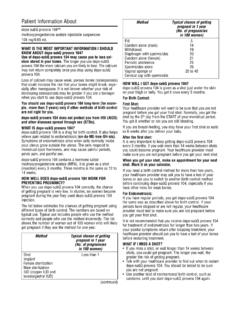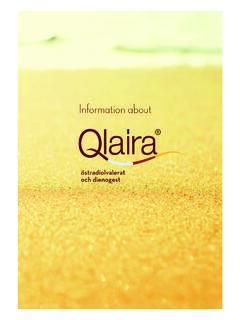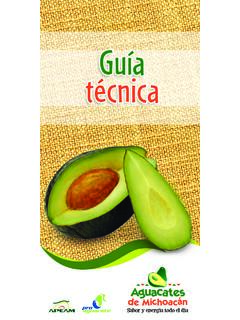Transcription of List of Xenoestrogens - Chemical Estrogens
1 1 List of Xenoestrogens - Chemical Estrogens Xenoestrogens are environmental hormone disruptors creating an imbalance with the body's hormones. Awareness of Xenoestrogens and avoidance are key to sustaining health. Xenoestrogens and Your Health Xenoestrogens are foreign Estrogens . They are estrogen mimickers that effect the estrogen in our bodies and can alter hormone activity. Growing evidence implicates Xenoestrogens in a wide range of human and wildlife health problems. There are some 70,000 registered chemicals having hormonal effects, in addition to being toxic and carcinogenic. The synergistic effects of exposure are well documented, but largely unknown.
2 These substances can increase the estrogen load in the body over time and are difficult to detoxify through the liver. It is now being discovered that these synthetic Estrogens are making their way into our bodies and pretending to be our biological estrogen. They are present in our soil, water, air, food supply, personal care and household products. List of Xenoestrogen Sources Organ chlorines, are one of the largest sources. They are used in pesticides, dry cleaning, bleaching of feminine-hygiene products and the manufacture of plastics. Bisphenol-A, a breakdown of polycarbonate, is used in many plastic bottles. It s found in the lining of many food cans and juice containers.
3 Avoid heated plastics, plastic lined items and Styrofoam (microwave, oven, sun), as the polycarbonate escapes Use glass, ceramics or steel to store/consume foods and liquids. Choose organic produce. Always go organic with thin skinned fruits and vegetables. Buy hormone-free animal products (eggs, poultry, meats, dairy). To avoid xenoestrogen injections, supplements, bovine growth hormone. A common food preservative in processed foods (BHS: butylated hydroxyanisole). Avoid non-organic coffee and tea. They are highly sprayed with pesticides. Use reverse-osmosis filter water or purchase your own filter (drinking and bathing). Many creams and cosmetics contain parabens and stearal konium chloride.
4 Choose natural brands (preservatives made with minerals or grapefruit seed extract). Most skin lotions, creams, soaps, shampoo, cosmetics use parabens and phenoxyethanol as a preservative. Substances are 100% absorbed into the body. Go natural or organic. Phthalates are commonly found in baby lotions and powders. Sunscreen can contain benzophenone-3, homosalate, 4-methyl-benzylidene camphor, octal-methoxycinnamate, octal-dimethyl-PABA. Go organic. Many perfumes, deodorizers, air fresheners have artificial scents and contain phthalates. Most perfumes are petrochemically based. Nail polish and removers contain harsh chemicals. 2 The birth control pill contains high concentration of synthetic estrogen.
5 Choose a condom or diaphragm gels without surfactants. Use a condom without spermicidal. Hormone replacement therapy (contains synthetic Estrogens ) - opt for paraben-free progesterone cream. Research ingredients in your pharmaceuticals. Dryer sheets, fabric softeners and detergents put petrochemicals right on your skin. Use laundry detergent with less chemicals or use white vinegar and baking soda. Be aware of noxious gas that comes from copiers and printers, carpets, fiberboards, new carpets. Do not inhale and protect your skin from: electrical oils, lubricants, adhesive paints, lacquers, solvents, oils, paints, fuel, industrial wastes, packing materials, harsh cleaning products, fertilizers.
6 Become educated on: pesticides, herbicides, fungicides, parathion, plant and fungal Estrogens , industrial chemicals (cadmium, lead, mercury), Primpro, DES, Premarin-cemeteries, Tagamet, Marijuana, insecticides (Dieldrin, DDT, Endosulfan, Heptachlor, Lindane/hexachlorocychohexan, methoxychlor), Erythrosine, FD&C Red No 3, Nonylphenol, Polychlorinated biphenyls, Phenosulfothizine, Phthalates, DEHP. The human body is being bombarded with these harmful chemicals every day creating an over burdened liver, weakening the immune system and disrupting the delicate hormonal balance. More and more evidence exposes Xenoestrogens to be dangerous chemicals that need to be avoided whenever possible.
7 Avoiding these synthetic chemicals and supporting the body through proper liver detoxification, hormone balancing and immune support, will work towards protecting our bodies. Tips to Avoid Common Sources of Xenoestrogens 1. Agricultural Chemicals such as: DDT, Atrazine, Endosulfan, and Methoxychlor Eat organic foods as often as possible Use natural pest control in your home and garden Avoid synthetic flea shampoos, flea collars, and flea pesticides for your pets and home If you must use synthetic pesticides or fertilizers, follow directions exactly. Campaign against pesticide use in schools and workplaces. Children are especially susceptible to the effects of Xenoestrogens .
8 2. Meat, dairy and eggs: growth hormones fed to cattle, pigs, poultry, and other livestock Choose organic meat, eggs, and dairy products Better yet, choose 100% grassfed meat and dairy products, and pastured pork and poultry Reduce your consumption of animal products in general, especially uncultured dairy products 3. Cosmetics and Toiletries Xenoestrogens absorbed by the skin are ten times more potent than those taken orally, because they travel directly to the tissues instead of passing through the liver. Choose natural plant based products. Read the ingredients carefully! Some things to avoid are: 3 Nail polish and sunscreen are more common sources of Xenoestrogens , including phthalates, benzophenone-3, homosalate, 4-methyl-benzylidene camphor (4-MBC), octyl-methoxycinnamate and octyl-dimethyl-PABA.
9 Other products, including body lotions, toothpastes, soaps, gels, hairsprays, and more may contain Xenoestrogens in the form of parabens, phenoxyethanol, phthalates, and other compounds. 4. Plastics Plastics, especially soft plastics, contain many compounds that are considered to be Xenoestrogens . Phthalates, a type of plasticizer used to make plastics soft and flexible, are an especially common offender. These compounds can leach out or volatize over time or in response to heat or other stimuli. Phthalates are used in products from food storage containers and packaging to children's toys to certain clothing and footwear items to toiletries to pesticides to IV bags to baby the list goes on and on.
10 How To Avoid Them Use cling wrap that does not contain DEHA and replace cling wrap on meats and other foods as soon as you get home from the store. Wrapping in tin foil or storing food in ceramic or glass containers may be another option. Never heat food with plastic in the microwave, even if it claims to be microwave-safe. Use glass or ceramics instead and cover with a paper towel if needed. Avoid Teflon and other non-stick cookware. Cast iron is an inexpensive, durable, and healthful alternative. Buy bottled water and other drinks in glass bottles instead of plastic. Minimize consumption of foods from tin cans. In the USA, over 85% of tin cans are lined with bisphenol-A (BPA) to reduce the metallic taste that can be present in canned foods.










